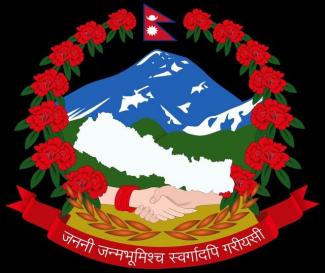Nepal: The Rising Political Uncertainty
Seven years back, Nepal began writing an inclusive constitution to institutionalize the gains of the peace process, which took off in November 2006. Finally, the new Constitution was promulgated on September 20, 2015. Unfortunately, nearly half of the Nepali population has branded the new Constitution as regressive and protested against it. The anti-draft protests in Nepal, especially in the southern plains, started on August 9, immediately after the constitution-making process was initiated. Since then, Nepal has witnessed many protests against the new Constitution in the Terai region (also known as Madhesh or the low-lying land of Gangetic Plain). Over 44 people have been killed, which include civilians and security personnel, and more than a hundred injured in clashes between security forces and protesters in different incidents. The situation worsened when the protestors blocked all the major trading points between Nepal and India and choked supply lines to Kathmandu. Many parts of Nepal have witnessed a shortage of essential commodities due to prolonged protests and roadblocks by the Samyukta Loktantrik Madhesi Morcha (SLMM), Tharus and various janajati (ethnic) groups.
Several attempts to initiate dialogues have been rejected by the agitating groups. They have insisted that the government has failed to create an atmosphere for negotiation and implement their demands. The marginalized groups of Nepal -Madhesi, Tharu and Janajatis- feel that the 2015 Constitution has failed to accommodate their long pending demands for the demarcation of provincial boundaries on ethnic lines, two Madhesh provinces, proportional representation in the State agencies and Parliament, equal political rights to persons, acquiring citizenship by naturalization and implementation of previous agreements between them and the State. The SLMM has also demanded the withdrawal of the Nepal Army from the Terai region as one of the pre-conditions for negotiation between state and agitating groups. Even after the promulgation of the Constitution with 85 per cent of votes by the Constituent Assembly (CA), the agitating groups have continued their protests.
Although the Janajatis and Madhesi groups have been demanding accommodation of their demands in the new Constitution to make it inclusive, the ruling establishment went ahead with the promulgation. This vitiated the trust level between the people living in the plains and the ruling Pahadi (hill) elites. Instead of keeping Nepal united, the new Constitution divided the Himalayan country along ethnic and geographical lines. For example, Article 42 (1) states: “Socially backward women, Dalits, Adibasi, Janajati, Adibasi Janajati, Madhesi, Tharu, minority groups, persons with disability, marginalized groups, Muslim, backward classes, gender and sexually minority groups, youths, peasants, labourers, the oppressed and the citizens of backward regions, and economically poor Khas Arya shall have the right to employment in state structures based on the principle of inclusion,” But the term ‘principle of inclusion’ appears vague and does not give any constitutional guarantee of marginalized groups’ representation in government jobs according to their population. This Article is, in reality, a backward step compared to the Interim Constitution of 2007, which guaranteed proportional representation of marginalized groups in government jobs.
Second, Article 84 (1) says, “The House of Representatives shall consist of two hundred and seventy-five members as follows:-(a) One hundred and sixty-five members elected through the first-past-the-post electoral system consisting of one member from each of the one hundred and sixty-five electoral constituencies formed by dividing Nepal into 165 constituencies based on geography, and population.” This provision has again undermined the marginalised groups’ representation in the lower house. The twin basis of delineating the electoral constituency again violates the democratic ethos. The Constitution is also silent about delineating the electoral constituency based on geography and population. This has made marginalized groups insecure.
Further, nowhere in the world is the electoral constituency for the lower house decided based on geography and population. By implementing these provisions, the hill region could acquire roughly 35 extra seats on a geographic basis since each district might elect one member. Again, on a population basis, hill regions could get around 22 seats more than the Terai.
Similarly, the Terai region could be poorly represented in the National Assembly (NA). According to Article 86 (2) (a), eight members would be elected from each province. In that case, two Terai provinces would send 16 members according to the present provincial boundaries. As a result, representations from hill provinces would dominate the NA with roughly 24 extra seats.
Third, the Constitution has discriminatory provisions regarding persons who obtain citizenship by naturalization. Article 11 (7) reads, “Person born to Nepali woman citizen married to a foreign citizen, she/he may acquire naturalized citizenship of Nepal as provided for by a federal law.” But again, Article 289 (1) restricts the persons who have obtained citizenship by naturalization process for top constitutional positions.
Lastly, while the people of the plains have been demanding two Madhesh Pradesh, the new Constitution has divided the region into six. This has further increased the political and social insecurity of the people living in the Terai region. They now feel the hill ruling classes do not want to share power with them.
Out of these four contentious provisions in the new Constitution, Articles 42, 84 and 86 are more severe than the others. Unless these provisions are corrected through amendments, the Terai region might continue to witness violent protests soon. Although the government has formed a three-member committee to initiate negotiations with agitating groups and the cabinet has approved amendments in Articles 42 and 84, the agitating groups feel an absence of sincerity from the government side. They feel that the government’s initiative is intended to divert the attention of the agitators. The government has not developed a detailed plan to address their demands. There is also a feeling that the amendment process may not be implemented because of sharp differences of views between the top three political parties about electing a consensus candidate for the prime minister position. The fissure within the top three political parties could either derail or delay the amendment process, which requires 2/3 majorities.
